What We’re Reading: Handbook, Unholy Shapes, & Mr. Incompleto

I always thought I felt ambivalent about comic book autobiography. It’s only recently that I’ve come to realize that my ambivalence is only toward a certain kind of autobiography, which cartoonist Mike Dawson has helpfully classified as “Sad Man Pulls at Himself.” According to Dawson, the Sad Man is “unloved by the women he desires, surrounded by possessions that remind him of childhood, thinking about his penis, and sometimes drawing about it.” Up until the 21st century (and probably beyond), the Sad Men have dominated and defined comic autobio. Luckily, it seems their time has passed. Here are three autobiographical comics that strike out from the well-worn Sad Man territory.
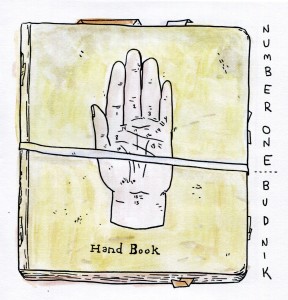 Handbook #1 & 2 by Kevin Budnik (2014)
Handbook #1 & 2 by Kevin Budnik (2014)
Budnik composes his journal comics by juxtaposing events of his contemporary life with journals from his time dealing with anorexia and anxiety in 2012. As a daily journal, each page stands as its own discrete narrative unit, relating a humorous anecdote, a breakthrough in therapy, and so on. Reading them daily (which you can do here), each one offers a satisfying bite of life. However, laying them out in a book has the effect of encouraging readers to look at sequenced pages as commentary on each other.
It’s this effect that has me enjoying Handbook more than a lot of journal comics. By separating himself into two people—2012 Kevin and 2014 Kevin—and implying a relationship between them by splicing them together, Budnik creates a dialogue with himself that tempers the meandering navel-gazing that most journal comics are heir to. If 2012 gets too serious, we can have a 2014 “gag” strip, and if 2014 gets too flippant or quiet, there are serious years to look back on.
One of the most touching strips comes from Budnik’s time in therapy:
With Handbook, Budnik turns autobiography into an outward-looking process. He is writing to the Kevin of 2012 just as much as he is writing to himself and his audience.
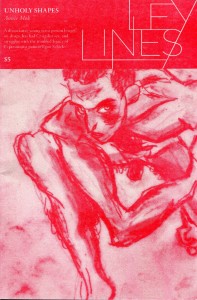 Unholy Shapes by Annie Mok (2014)
Unholy Shapes by Annie Mok (2014)
Where Budnik is in talks with himself, Annie Mok is in talks with Egon Schiele. Unholy Shapes traces the lives of Mok and Schiele and how they intersect, but the most effective moments come from where they diverge.
There are parts of Schiele’s career that seem to parallel Mok’s, such as envisioning projects too large to complete. However, as he gets older, as he paints nude children without their parents’ permission, as he leaves his mistress for a rich woman, Mok draws parallels between him and artists like Woody Allen or R. Crumb—men who, proclaimed as geniuses, seem to get passes on criminal actions and questionable or offensive art.
In the end, Schiele and his art remind Mok of her childhood fears and trauma, but she still sees echoes of his art all around her (and even in herself).
Mok’s art in Unholy Shapes is alternately smudgy and sharp, loose, layered, and perfect for the subject matter. In a book about artistic influence, it’s neat to see her incorporate the Santoro coloring method she’s talked about; bits of Emily Carroll are also visible, like in this word balloon:
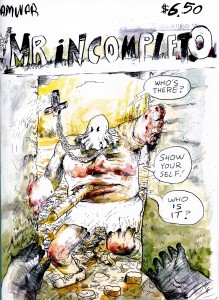 Mr. Incompleto by Josh Bayer (2014)
Mr. Incompleto by Josh Bayer (2014)
Josh Bayer’s comics look like they were drawn on notebook covers during your least favorite class (assuming the student was influenced by early 20th-century newspaper strips). There’s a hectic, scratchy energy to Bayer’s lines. There’s a certain sense of pubescent discomfort to it too; the men in the book (and the lone woman) bulge with uncomfortable masculinity.
The story is a remix or “cover” of Marvel Two-in-One #69. Both versions (Bayer’s and the original) are about a superhero coming from the future to help his younger self. In Marvel Two-in-One, the man from the future helps his younger self come to terms with his superpowers. In Mr. Incompleto, the young version crucifies his father on a tree, and the two time-tossed men use their powers to wipe the bloody event from their brains.
Bayer has said that “…doing the…cover comics is just some weird device that measures how uncomfortable I am with telling a real autobiographical story. Each time I do a [cover] story, I let whatever fragments I remember from around that time enter the story.” So where Budnik talks to his young self and Mok looks at the life and work of an artist, Bayer filters his feelings through ’80s superhero comics. Does it reveal much about the “facts” of Bayer’s life? Not at all. However, it’s effective at capturing a mostly invisible yet seething, adversarial masculinity that young people might experience. Like the heroes of Mr. Incompleto, young men often block or ignore the violence that comes from that masculinity. But just like the father left hanging from a tree, that violence persists.
If you were to look into your past, which version of yourself would you want to talk to? Whose works have shaped and altered your life, and whose could you speak through?
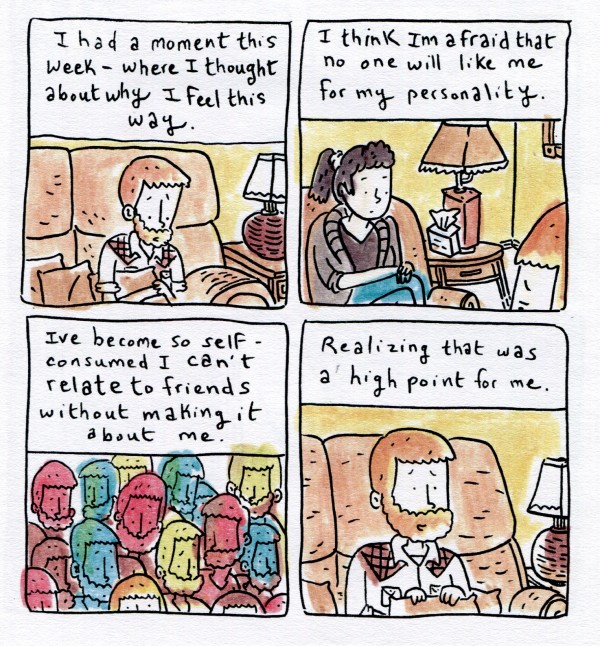
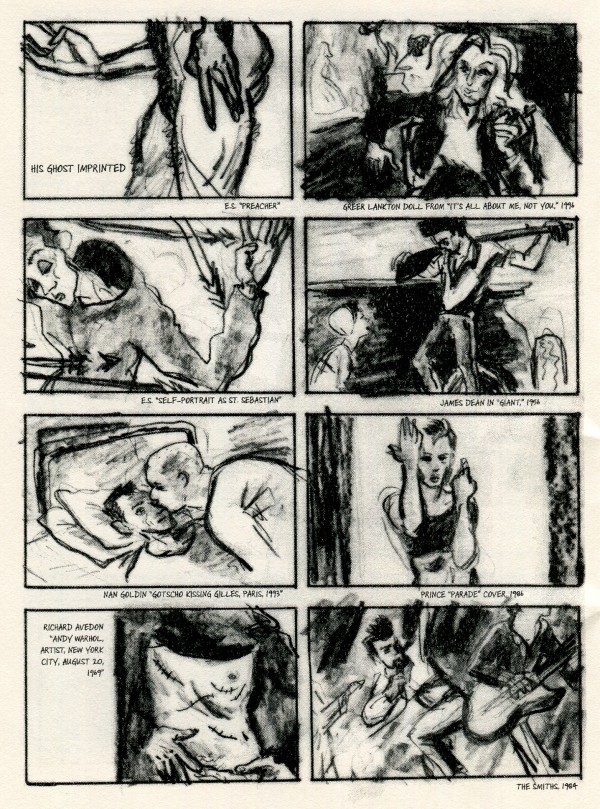
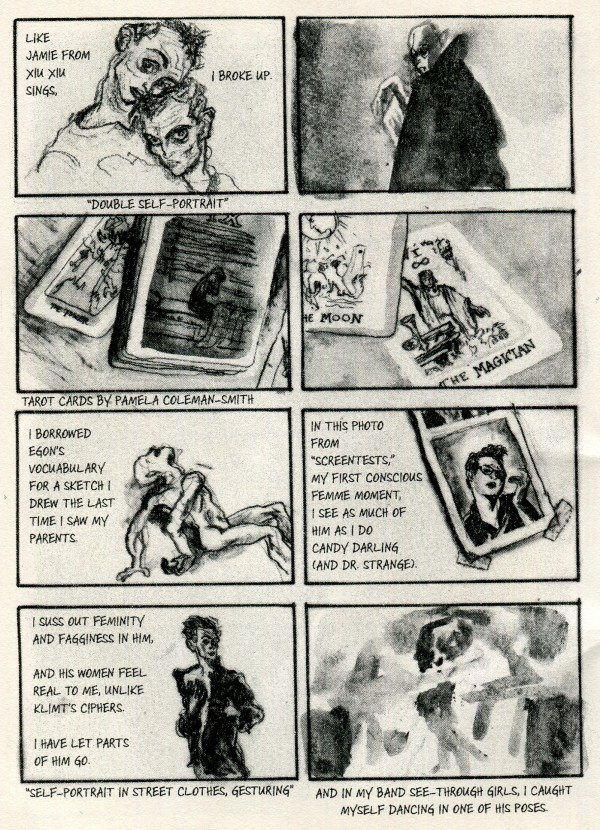
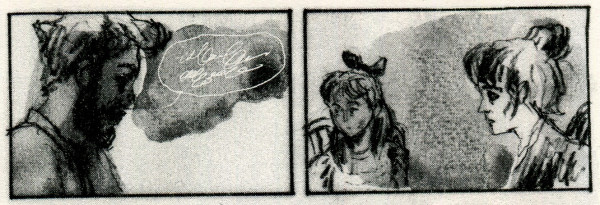
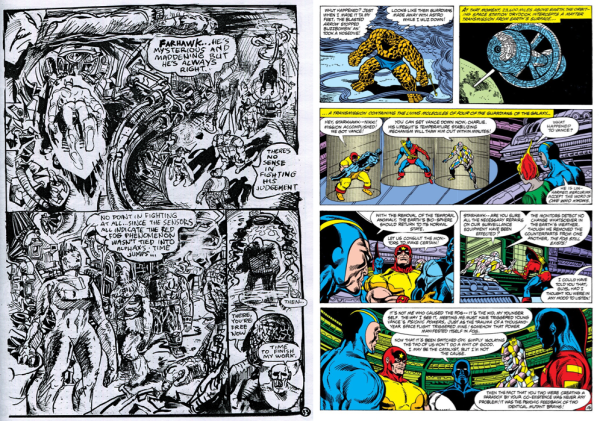






Comments are closed.